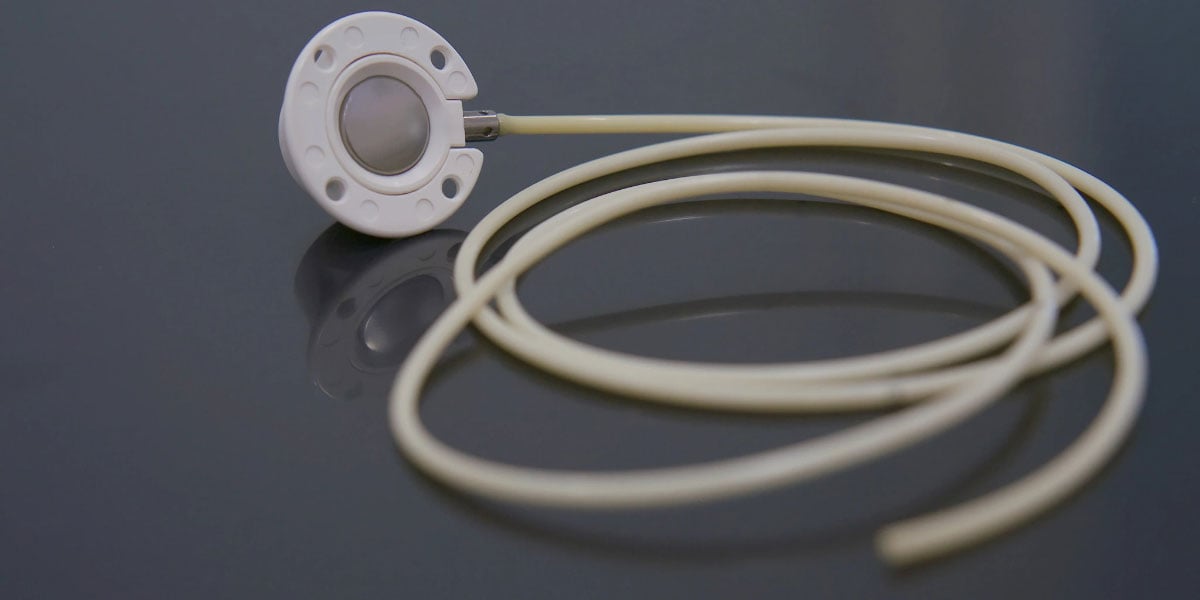Embarking on the journey to start chemotherapy involves several crucial steps, one of which is the placement of a venous access device, commonly known as a port. This device is a pivotal part of care for patients undergoing chemotherapy, as it allows efficient delivery of medication with minimal discomfort. However, understanding the timeline for initiating chemotherapy post-port placement is vital for both patients and their caregivers. It ensures preparedness for the treatment journey and facilitates effective planning around personal and medical commitments.
Chemotherapy can typically begin one to two weeks after port placement. This waiting period allows the body to heal adequately, minimizing the risk of complications during chemotherapy sessions. The exact timing can vary based on individual healing rates, the type of cancer being treated, and other health considerations. Healthcare providers at leading centers like Mountain View Surgical have robust protocols in place to assess readiness, ensuring both safety and efficacy in treatment.
Understanding the Port Placement Process
Port placement is an intricate procedure that requires careful planning and execution to ensure optimal functionality during cancer care. The process begins with selecting an appropriate site, often the upper chest area, where a port can be comfortably positioned. The jugular vein is a frequent choice due to its accessibility and prominence, facilitating efficient medication delivery. This anatomical choice is crucial not only for medical efficacy but also for patient comfort, as it reduces the need for repeated needle sticks during treatment.
Advanced imaging techniques, such as ultrasound or fluoroscopy, aid in ensuring accurate placement of the port. These technologies help visualize the vascular system, guiding the surgical team in achieving precise positioning, which is critical for minimizing risks and complications. For those preparing for port placement at Mountain View Surgical, the surgical team’s expertise and use of minimally invasive techniques can promote quicker recovery times. Knowing the strategic planning involved can offer reassurance to patients and their families, enabling them to focus on the next steps in their treatment journey with confidence.
Preparing for Chemo
Preparing for chemotherapy involves a holistic approach beyond the physical readiness of a venous access device. Mental and emotional preparation is equally important and can significantly influence the treatment journey. Mindfulness techniques, such as meditation and controlled breathing exercises, can help manage the stress and anxiety often accompanying chemotherapy. These practices not only improve mental well-being but also enhance physical resilience, providing patients with tools to navigate treatment challenges.
Establishing a robust support system is also crucial. Family, friends, counselors, and support groups can offer emotional support, shared experiences, and practical advice. Engaging with others who understand the journey can be comforting and empowering, as patients share narratives and coping strategies. Healthcare providers at facilities like Mountain View Surgical can offer guidance on available resources and connect patients with community or hospital-based support groups, ensuring comprehensive care and support.
After Port Placement: Immediate Steps and Care
Following port placement, careful attention to recovery practices is paramount. The immediate postoperative period is crucial for ensuring that the port site heals properly and is ready for chemotherapy. Patients should monitor vital signs, such as blood pressure and temperature, to detect any early signs of complications. Keeping the incision site clean and free from potential irritants is essential to prevent infections. Symptoms like redness, swelling, or unusual discharge should prompt medical evaluation to ensure timely intervention.
Pain management is another critical aspect during the recovery phase. Healthcare providers typically prescribe medications to manage discomfort, but alternative approaches such as warm compresses or relaxation techniques can also be beneficial. Patients are advised to avoid strenuous activities in the days following the procedure to facilitate the healing process and prevent dislodging the port. Regular follow-up appointments with healthcare providers at institutions like Mountain View Surgical are crucial for addressing concerns and ensuring the port’s readiness for chemotherapy. This seamless transition from port placement to chemotherapy is supported by well-coordinated care from a dedicated healthcare team.
Immediate Use of Port for Chemotherapy
Once the port is successfully placed and assessed, the healthcare team’s focus shifts to preparing the body for chemotherapy. Oncologists play a crucial role in evaluating when the flexible tube is ready to begin treatment. This decision is based on individual healing processes, the type of medication to be administered, and specific patient conditions that may influence timing. Engaging with the surgical team to confirm the catheter’s readiness for use is essential for safe and effective therapy delivery.
Imaging techniques, such as X-rays or ultrasound, are often employed to verify catheter placement, ensuring the port is correctly positioned and functioning as intended. Flushing the port with a saline solution is a standard practice before starting an infusion, helping clear any blockages and maintain the port’s patency. Close monitoring for signs of infection or inflammation at the incision site remains a critical part of ongoing care. Interdisciplinary collaboration among oncologists, surgeons, and nursing staff at facilities like Mountain View Surgical maximizes therapeutic outcomes and ensures patient safety.
Venous Access Devices: A Summary
- Oncologists assess the readiness of the venous access device based on individual healing and specific treatment needs.
- Imaging techniques verify catheter placement and reduce the risk of complications.
- Flushing the port with saline solution is necessary to avoid blockages prior to infusion.
- Continuous monitoring of the incision site for infection or inflammation is crucial to maintain the treatment plan.
Port Care Tips
Maintaining port hygiene is critical to preventing infections immediately after use. The use of antiseptic solutions is recommended to clean around the access point, enhancing sterility and reducing infection risks. Employing advanced materials and instruments designed for port maintenance ensures optimal safety and efficacy during chemotherapy treatment.
Incorporating meticulous cleanliness into daily routines aids in reducing infection risks around the port. Patients should be aware of their environment, ensuring it remains as sterile as possible, especially when accessing the port for treatment. Identifying early signs of complications, such as unexpected pain, swelling, or discoloration, allows for timely medical intervention and helps secure the safety of chemotherapy administration. These proactive care practices form a foundation for effective health management.
Monitoring Port Complications
Being vigilant about potential issues with the port is essential for preventing more serious complications. Early indicators such as pain, swelling, discoloration, or redness should prompt immediate medical attention, as they may signify infections or device misplacement. Regular monitoring and communication with healthcare providers are key to minimizing infection risks. Patients should be encouraged to keep a detailed log of any symptoms or changes they notice around the port site, which can provide valuable information during medical evaluations.
Utilizing mobile apps and other digital tools can assist in providing patients with valuable information about their port, guiding them through proper care and reducing the risk of complications. These tools can offer step-by-step instructions on cleaning techniques, reminders for maintenance appointments, and direct communication channels with healthcare providers. Empowering patients with knowledge and resources supports proactive management of port care.
Importance of the Healthcare Team
The coordination among healthcare professionals significantly influences the quality of care a patient receives. Effective teamwork and clear communication among medical practitioners are crucial for seamless patient management. By working collaboratively, healthcare teams can anticipate potential issues, streamline treatment processes, and ensure every aspect of patient care is addressed.
Leveraging digital platforms and scheduled meetings enhances collaboration and improves treatment outcomes. These tools facilitate the sharing of critical information among team members, allowing for timely updates and informed decision-making. Innovative models of teamwork, often adopted by renowned cancer treatment centers like Mountain View Surgical, streamline procedures, reducing treatment delays and enhancing patient experience.
These approaches highlight the indispensable role of healthcare teams in managing complex medical care, ensuring that patients receive comprehensive support throughout their treatment journey. The integration of different specialties within the team allows for a holistic approach to patient care, addressing both medical and psychosocial needs. By fostering a patient-centered environment, healthcare teams contribute to improved treatment efficacy and patient satisfaction.
Benefits of a Port for Chemo
For many patients undergoing extensive cancer treatments, an implanted venous device offers several advantages:
- Enhanced Comfort: It minimizes discomfort by eliminating the need for repeated needle sticks, reducing anxiety during chemotherapy sessions. This feature is particularly beneficial for patients requiring long-term or frequent treatments, as it spares them the repeated trauma of traditional venous access methods.
- Improved Treatment Efficacy: Consistent and accurate medication delivery is crucial for achieving desired treatment outcomes and reducing the risk of venous damage. The use of a port ensures medications are delivered directly into the bloodstream with precision, enhancing the effectiveness of chemotherapy.
- Convenience and Reliability: Regular maintenance of the device sustains its benefits, with placement typically occurring during an outpatient procedure. This setup ensures optimal function and allows patients to return to their daily activities with minimal disruption. The reliability of the port system provides peace of mind for both patients and their caregivers, knowing that treatment can proceed smoothly and efficiently.
Starting chemotherapy after port placement involves a well-coordinated approach from preparation to execution, supported by a dedicated healthcare team. By understanding the process, preparing both physically and mentally, and adhering to port care guidelines, patients can begin their chemotherapy journey with confidence and assurance. For those ready to take the next step, scheduling a consultation with a specialized healthcare provider is an excellent way to initiate this process.






